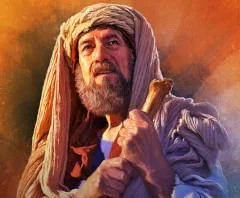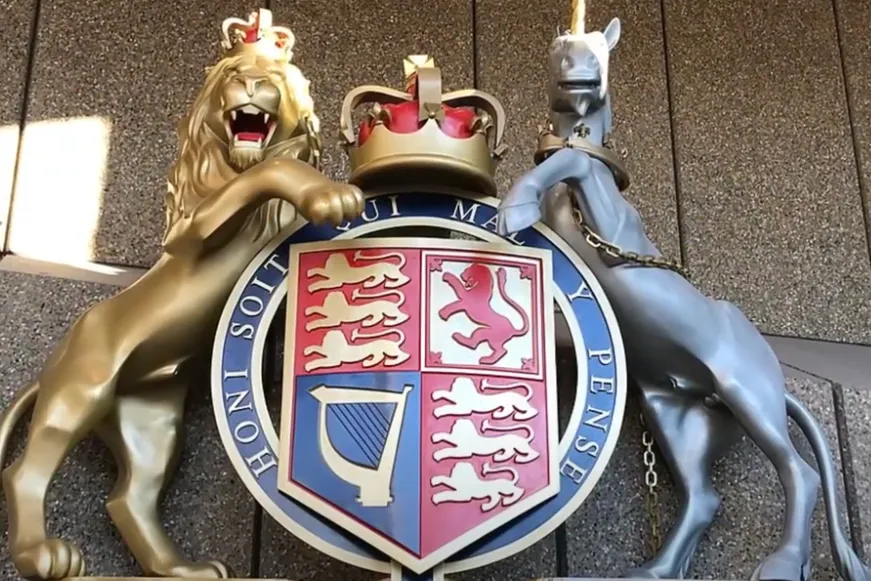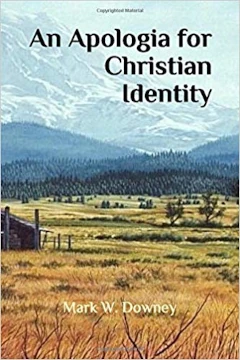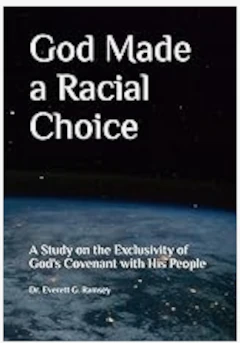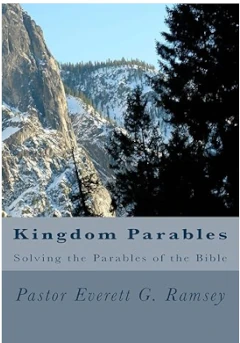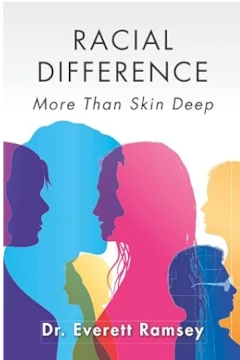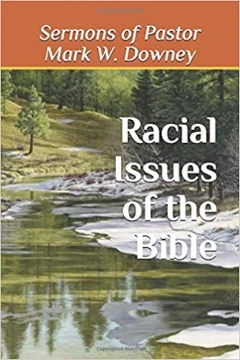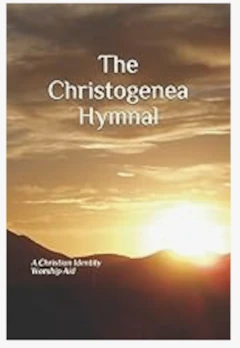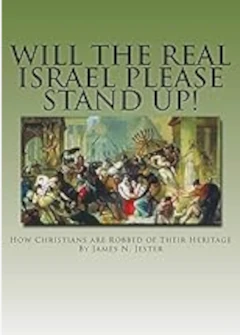Protestantism Destroyed Part 2: The Red Mass
Copied from the sermon notes of Pastor Don Elmore
November 6, 2016
Scripture Reading: Nehemiah 13:3 “Now it came to pass, when they had heard the law, that they separated from Israel all the mixed multitude.”
October 31, 1517 Martin Luther nailed the 95 objections that he had with the Catholic faith on the front door of the Wittenberg Castle Church. This began the Protestant Reformation. That was just about 499 years ago.
But before I begin, the main topic of this sermon, I want to tell you about a conversation I had with a passenger that I met at work. It was a talk that lasted about 10-15 minutes. It started very calmly:
“How ya doing?” was my introductory statement.
He answered: “I’m doing all right.”
I then asked him about how the French treat Americans while they are in Paris.
He answered, “A lot better than they used to, say, about five years ago. With all the refugees and different people who have entered their country, there is more of a trust of Americans.”
We talked about this situation for a couple of minutes. But the conversation reached a new level when he said:
“I used to travel in a lot of different countries when I was a young man. Twenty-five of them when I worked for the” …and then he whispered, “the C.I.A.”
“The C.I.A.!” I said in a rather startled voice.
But he quickly motioned to me to be quiet about the identity of his former job.
So, then I said to him, “Then you know that the former head of the C.I.A. was George H. W. Bush and that he and Bill Clinton, when he was governor of Arkansas, made a deal. They would bring drugs into America at two different airports—one in Louisiana and the other one in Mena, Arkansas.”
He nodded his head, yes.
I said, “You have to know how corrupt our government is.”
He replied, “I do! We have had crime families in control of our country for many, many decades.” He then went on and explained how corrupt our government leaders have been and are.
I finished up with the statement, “You know that 9/11 was not done by Osama Bin Laden. He didn’t bring down a 47 story building in 6 ½ seconds! It was a traitorous, espionage adventure pulled off by the crime mafia that is in the American federal government and the Mossad of Israeli to start a war against the Muslims.
He nodded again, yes, this time sheepishly. More people were now beginning to come in the bathroom, so we said our good-byes.
“It’s been a pleasure talking to you,” he said. “Good-bye.”
I told him “goodbye” and went both went about our business.
That conversation gave me additional assurance to know that what I have been saying over the last few years is true. It is like the conversation I had with a former prisoner at Auschwitz, the supposed death camp of the Jewish people, that I had over 30 years ago.
I mustered up the courage and said to this former Jewish Auschwitz prisoner who had the serial number of the campground tattooed on his arm, “You worked at I. G. Farben Chemical Company.”
He was very startled and hesitated. After a few seconds of quiet, he began to tell me the truth. He revealed how he had worked for the chemical company for about four years and how well he had been treated at the Auschwitz camp. He even showed me a worn-out picture of himself coming out of the factory. It wasn’t a great place to be at the time, but it was a working camp and not a death camp as it is proclaimed to be in today’s main-stream-media world. It sure is strange, when the camp was supposed to be gassing the Jews to an almost immediate death, that a large number of them worked seven days a week at the chemical factory. But if a person thinks a little bit about it, they needed workers. Where were all the men? Fighting a war against their enemies on all sides of their country. Who was left to work in the factories? The women, old men, children, prisoners and people who they put in concentration camps. My conversation with this former concentration camp worker proved it for me.
And now we move on to another strange occurrence that I learned about last week. Who does the current Pope of the Catholic Church say that he prays to every day? He has done this for a long, long time. Would anyone like to guess?
Question: Who does the current Pope pray to each and every day? Any answers?
The correct answer was given by the Bishop of the Catholic Church in Fort Wayne, Indiana who was conducting the Red Mass. In his sermon he stated that the Pope had said that he prays every day to Thomas More, the martyr of the Catholic Church. And not only does the current Jesuit Black/White Pope pray to this dead man who was beheaded 500 years ago, everyone in the Red Mass prays to this deceased individual. All the special guests including:
- Judges, including the Supreme Court Judges
- Lawyers
- Government officials
- Secretary of State
- Prosecutors
- Attorneys
- President and Vice-president and their spouses, etc.
Now who was Thomas More? Remember from my last sermon (three Sundays ago) that Thomas More lived during the lifetime of King Henry VIII of England, and two of the major Protestant reformers:
- William Tyndale and
- Martin Luther
More was born in 1478 and died in 1535. He was a counselor to Henry VIII and Lord High Chancellor of England from 1529 to May 1532.
Thomas More was opposed to the Protestant Reformation, in particular, the theology of Martin Luther and William Tyndale. He opposed the predestination TULIP doctrine taught by Martin Luther. He hated any book that Luther wrote. He really would have been incensed at Luther’s book titled The Jews and Their Lies, but it was written eight years after More’s execution. Here is an excerpt from that book:
“I had made up my mind to write no more either about the Jews or against them. But since I learned that these miserable and accursed people do not cease to lure to themselves even us, that is, the Christians, I have published this little book, so that I might be found among those who opposed such poisonous activities of the Jews who warned the Christians to be on their guard against them. I would not have believed that a Christian could be duped by the Jews into taking their exile and wretchedness upon himself. However, the devil is the god of the world, and wherever God’s word is absent he has an easy task, not only with the weak but also with the strong. May God help us. Amen.”
Thomas More was a leader in burning all the books that did not agree with the Roman Catholic Church in its theology, traditions or church practices. More also was noted for imprisoning, capturing, torturing and even executing many in the newly formed Protestant movement.
In addition, he also opposed the King’s separation from the Catholic Church, refusing to acknowledge King Henry as Supreme Head of the Church of England and the annulment of his marriage to Catherine of Aragon. After refusing to take the Oath of Supremacy, More was convicted of treason and beheaded.
This is the reason that Thomas More was made a saint in the Catholic Church. The fact that More was known to break into the houses of suspected Catholic heretics, arresting them on the spot and sometimes interrogating them in his own home is basically ignored to deceive the masses of people.
He imprisoned and tortured many Lutherans for their heretical beliefs against the Catholic Church and many Protestants who helped finance and support Tyndale, the translator of the Bible into English. Should any Lutheran of today praise More for his actions against their leaders? More was Tyndale’s persistent enemy. He hunted after him through many European countries. He burned all of his writings that he could find. He even invaded people’s homes looking for the banned books that Tyndale had written. He is guilty of the torture and death of many Protestants. But he was made a saint by the Roman Catholic Church.
Think about this for a minute. Was Thomas More a man who acted in a way that pleased God or was he a man that acted counter to the ways of God? Do you think that the Protestant Reformation was good or do you agree with Thomas More that it was evil? Do you enjoy singing the hymns that were written by the man (Martin Luther) who Thomas More hated?
The fact that we have an English Bible available to us was because of the work of Tyndale. Should we praise More who did all he could do to stop him from writing this translation into English?
Do you agree with Fox’s Book of Martyrs? Is William Tyndale in that book? Yes, he is. His story is in chapter 12. Here are a few excerpts from Fox’s famous book explaining Tyndale’s famous translation of the Bible into English that led to his eventual death:
“When God's will was, that the New Testament in the common tongue should come abroad, Tyndale, the translator thereof, added to the latter end a certain epistle, wherein he desired them that were learned to amend, if ought were found amiss. Wherefore if there had been any such default deserving correction, it had been the part of courtesy and gentleness, for men of knowledge and judgment to have showed their learning therein, and to have redressed what was to be amended. But the clergy, not willing to have that book prosper, cried out upon it, that there were a thousand heresies in it, and that it was not to be corrected, but utterly to be suppressed. Some said it was not possible to translate the Scriptures into English; some that it was not lawful for the lay people to have it in their mother tongue; some, that it would make them all heretics. And to the intent to induce the temporal rulers unto their purpose, they said it would make the people to rebel against the king.”
“For these and such other considerations this good man was stirred up of God to translate the Scripture into his mother tongue, for the profit of the simple people of his country; first setting in hand with the New Testament, which came forth in print about A.D. 1525. Cuthbert Tonstal, Bishop of London, with Sir Thomas More, being sore aggrieved, despised how to destroy that false erroneous translation, as they called it.”
“In the registers of London it appeareth manifest how that the bishops and Sir Thomas More having before them such as had been at Antwerp, most studiously would search and examine all things belonging to Tyndale, where and with whom he hosted, whereabouts stood the house, what was his stature, in what apparel he went, what resort he had; all which things when they had diligently learned then began they to work their feats.”
“As touching his translation of the New Testament, because his enemies did so much carp at it, pretending it to be full of heresies, he wrote to John Frith, as followeth, ‘I call God to record against the day we shall appear before our Lord Jesus, that I never altered one syllable of God's Word against my conscience, nor would do this day, if all that is in earth, whether it be honor, pleasure, or riches, might be given me.’”
All four of these quotes are from Fox’s Book of Martyrs, chapter 12. The question is, who do you believe? The Roman Catholic Church or John Fox? Are you glad that you have the choice to read the Bible in English or do you want it to still be in Latin? Do you believe Thomas More was correct in chasing down Tyndale or was he an evil terrorist hunting a great man of God?
The Roman Catholics believe that Thomas More was a hero. Pope Pius XI canonized Sir Thomas More in 1935 as a martyr. That means that he was made a saint. Pope John Paul II in the year 2000 declared him the “Heavenly Patron of Statesmen and Politicians.” Since 1980, the Church of England has remembered Thomas More liturgically as a Reformation martyr.
Let’s have a quick review. Thomas More was an individual:
- who over-saw massive Tyndale Bible burnings
- who had a hand in bringing William Tyndale to be burnt at the stake for heresy
- who broke into the homes, had many arrested, tortured, imprisoned and executed for being either a supporter and follower of Luther or Tyndale or both
- who burned many of Martin Luther’s writings
- who was made a saint in the Catholic Church in 1935 and proclaimed to be The Patron of Statesmen and Politicians on October 31, 2000
Thomas More was a hater of the Protestant Reformation. This is usually omitted when you read what the Roman Catholics now say about him. He did everything in his power to destroy the writings and men who stood against Catholic theology and the traditions of the Church.
Why are so many churches and schools named after Thomas More by the Catholics? The Roman Church hasn’t change much at all—they still want Roman Catholicism as the one-world religion, for their one-world government.
In fact, More was the author of a book that was written right before the start of the Protestant Reformation. It name was Utopia. It was written 500 years ago, in 1516, and contained many arguments against the heresies of Protestantism.
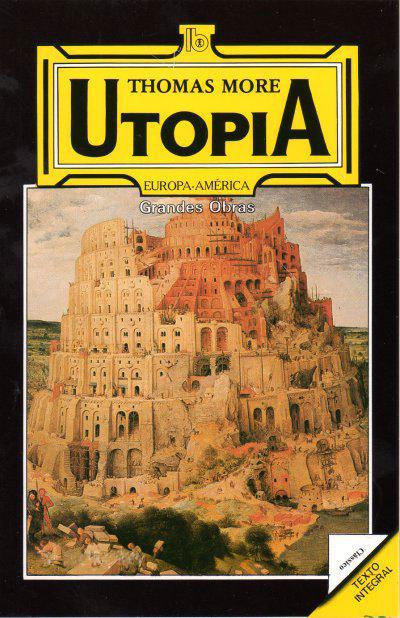 More also cultivated friendships with the most important thinkers of England and the European continent, including a friendship with perhaps the greatest humanist thinker of the time, Desiderius Erasmus. In 1518 More entered the service of King Henry VIII, soon becoming a trusted advisor. He gained the office of Chancellor in 1529. Through all of his success, More remained a profoundly religious Catholic. Though he had decided he could better serve his God as a lay Christian, More still followed many of the ascetic practices of monks:
More also cultivated friendships with the most important thinkers of England and the European continent, including a friendship with perhaps the greatest humanist thinker of the time, Desiderius Erasmus. In 1518 More entered the service of King Henry VIII, soon becoming a trusted advisor. He gained the office of Chancellor in 1529. Through all of his success, More remained a profoundly religious Catholic. Though he had decided he could better serve his God as a lay Christian, More still followed many of the ascetic practices of monks:
- Rising early
- Fasting
- Engaging in prolonged prayer
- Wearing a hair shirt, and
- Living in immense poverty.
More lived during the early years of the Protestant Reformation, and was a leader of the Counter-Reformation. In England, More was a tireless persecutor of Protestants, although, paradoxically, one of the tenets of his Utopian society was religious toleration.
A picture of the Tower of Babel is placed on the front cover of the book, Utopia. It depicts how tragic Utopia’s end would have been if it had been a reality instead of just an imaginary island.
Utopia is a Greek name which means “No place.” More’s Utopia describes a pagan and communist city-state in which the institutions and policies are entirely governed by reason. The order and dignity of such a state provided a notable contrast with the unreasonable polity of Christian Europe, divided by self-interest and greed for power and riches, which More described in Book I. The description of Utopia is put in the mouth of a mysterious traveler, Raphael Hythloday, in support of his argument that communism is the only cure against egoism in private and public life.
Through dialogue More speaks in favor of the mitigation of evil rather than its cure, human nature being fallible. Among the topics discussed by More in Utopia were:
- Penology
- State-controlled education
- Religious pluralism
- Divorce
- Euthanasia
- Women’s rights
The resulting demonstration of his learning, invention, and wit established his reputation as one of the foremost humanists. The book is composed of two parts; paradoxically, the first written last and the second written first. It is the second book that depicts Utopian society and which most closely resembles the humanist thinking of Erasmus. The first book serves as an introduction to the second, but also as a commentary on it. In fact, the first book was itself likely written in two parts. Initially, it was simply a short introduction, a way to introduce the fictional More to the character of Hythloday. The second part of the first book involves an extended speech by Hythloday on a number of issues, some that were of vital and personal interest to More the author, others that provide a certain insight into Hythloday and perhaps reveal him to be not quite as knowledgeable as one might first believe. Utopia is, then, a depiction of a semi-ideal society and all of the criticism of European society that this ideal represents, and it is a commentary on itself and its themes.
Often, Utopia, the product of a profound thinker who was still developing his thought, seems to question itself. The book can at times be paradoxical, just as More himself could be. For example, he was:
- a man who preached religious toleration but methodically persecuted Protestants
- a man who decided to remain a lay Christian rather than enter the priesthood but ultimately died a martyr for his faith
 Ultimately, Utopia is a book that, like More, attempted to navigate a course through the ideal and the real, between a desire to create perfection and the pragmatic understanding that perfection, given the fallibility of mankind, is impossible.
Ultimately, Utopia is a book that, like More, attempted to navigate a course through the ideal and the real, between a desire to create perfection and the pragmatic understanding that perfection, given the fallibility of mankind, is impossible.
The imaginary island of Utopia was shaped like a crescent. In the middle it was 200 miles broad, and holds almost at the same breadth over a great part of it.
Thomas More invented the word “Utopia,” and later in history there have been over 80 communities in the United States that have set up a Utopian society. The town of Amanda, Iowa operated as a communal society for 89 years. Most of the settlers were immigrants who left Germany in 1842 and came to Iowa in 1855.
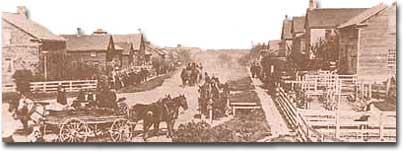 AMANDA, IOWA
AMANDA, IOWA
As 19th century America grew larger, richer, and more diverse, it was also trying to achieve a culture that was distinct and not imitative of any in Europe. At the same time, the thirst for individual improvement had local communities creating debating clubs, library societies, and literary associations for the purpose of sharing interesting and provocative ideas.
Most of the original utopias were created for religious purposes. One of the earliest was devised by George Rapp, a German zealot who took 600 followers to western Pennsylvania in 1804. Using shared funds to purchase land, the Rappites created a commune where they isolated themselves from others while waiting for the Revelation. Because of their extreme views on sex and marriage, and their strict, literal interpretation of the Bible, they failed to spread goodwill or gain converts.
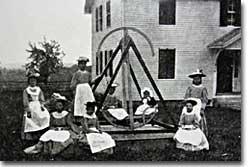 The Shakers believed in celibacy in and outside of wedlock, therefore Shaker children were usually orphans given to the church.
The Shakers believed in celibacy in and outside of wedlock, therefore Shaker children were usually orphans given to the church.
More hospitable to their neighbors and able to attract about 6,000 members by the 1830s, twenty successful Shaker communities flourished. They followed the principles of simplicity, celibacy, common property, equal labor and reward espoused by their founder Ann Lee.
Gradually, Utopian communities came to reflect social perfectibility rather than religious purity. Robert Owen, for example, believed in economic and political equality. Those principles, plus the absence of a particular religious creed, were the 1825 founding principles of his New Harmony, Indiana, cooperative that lasted for only two years before economic failure.
John Humphrey Noyes designed Oneida community in upstate New York. Oneidians experimented with group marriage, communal child rearing, group discipline, and attempts to improve the genetic composition of their offspring.
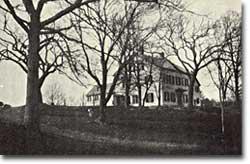 The founders of Brook Farm tried to create a society of equality for its members.
The founders of Brook Farm tried to create a society of equality for its members.
Self-reliance, optimism, individualism and a disregard for external authority and tradition characterized one of the most famous of all the American communal experiments. Brook Farm, near Roxbury, Massachusetts, was founded to promote human culture and brotherly cooperation. It was supposed to bestow the highest benefits of intellectual, physical, and moral education to all its members.
Through hard work and simplicity, those who joined the fellowship of George Ripley’s farm were supposed to understand and live in social harmony, free of government, free to perfect themselves. However, Nathaniel Hawthorne, who wrote about his stay here in the Blithedale Romance, left this utopia disillusioned. Hawthorne was also the author of The Scarlet Letter and The House of Seven Gables, among others.
Finally, it was romantic thinker and strict vegetarian Bronson Alcott, father of author Louisa May Alcott, who devoted himself to tilling the soil at Fruitland’s from June 1844 to January 1845 in the hope that love, education, and mutual labor would bring him and his small following peace. He was later ridiculed as “a man bent on saving the world by a return to acorns.” His daughter, Louisa May Alcott, later wrote the famous novel, Little Women. They were friends with transcendentalists Ralph Waldo Emerson and Henry David Thoreau. Hmmm. These were many of the authors that we read in the public school.
The 1840s marked the height of the utopian trials. The belief that man was “naturally” good and that human institutions were perfectible had raised tremendous expectations about the possibilities of reform and renewal. These experiments ultimately disintegrated but, for a while, tried to be ideal places where a brotherhood of followers shared equally in the goods of their labor and lived in peace. It seemed that within the great American experiment, searching for utopia required only the commitment of people who found it easy to believe that nothing was impossible.
THE “RED MASS”
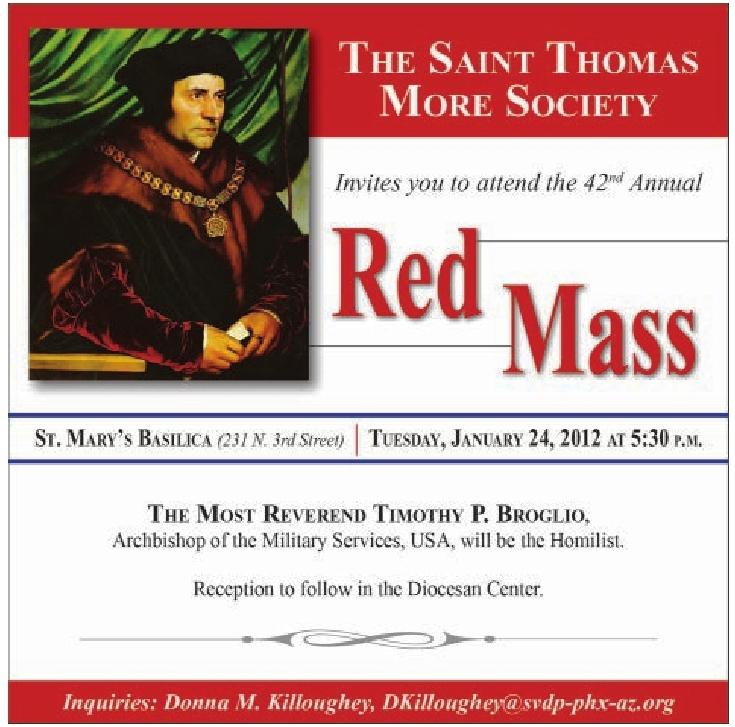 And what is the Red Mass? The “Red Mass” is an historical tradition within the Catholic Church dating back to the thirteenth century when it officially opened the term of the court for most European countries. The first recorded Red Mass was celebrated in the Cathedral of Paris in 1245. From there, it spread to most European countries.
And what is the Red Mass? The “Red Mass” is an historical tradition within the Catholic Church dating back to the thirteenth century when it officially opened the term of the court for most European countries. The first recorded Red Mass was celebrated in the Cathedral of Paris in 1245. From there, it spread to most European countries.
So, about 300 years before the Protestant Reformation made its arrival onto the scene, the Red Mass officially began. There were no Bibles available for the common man at that time. There were no French Bibles at the time the Red Mass started in Paris. The Bibles were read to the people by the clergy of the Catholic Church. The clergy had almost a monopoly on the reading the Bible.
Around 1310, during the reign of Edward I, the tradition began in England with the Mass offered at Westminster Abbey. The Red Mass received its name from the fact that the celebrants were vested in red and the Lord High Justices were robed in brilliant scarlet. They were joined by the university professors with doctors among them displaying red in their academic gowns. Hmmm. What person’s name meant “Red” when translated into English? It was the name of Edom.
The Red Mass also has been traditionally identified with opening of the Sacred Roman Rota, the supreme judicial body of the Catholic Church. In the United States the first Red Mass occurred in New York City on October 6, 1928. This mass was celebrated at Old St. Andrew’s Church with Cardinal Patrick Hayes presiding.
Today, well over 25 cities in the United States celebrate the Red Mass each year, with not only Catholic but also Protestant and Jewish members of the judiciary and legal profession attending the mass. One of the better-known Red Masses is the one celebrated each fall at the Cathedral of St. Matthew the Apostle in Washington, D.C. It is attended by:
- Justices of the Supreme Court
- Members of Congress
- The diplomatic corps
- The Cabinet
- The Secretary of State
- The First Lady
- Other government departments and, sometimes
- The President of the United States.
All officials attend in their capacity as private individuals rather than as government representatives, in order to prevent any issues over separation of church and state. But that is kind of hard to figure how that could even be so- Protestants and Jews attending a Roman Catholic mass and saying prayers to a dead man, a man who killed many Protestants? Who do they think is blessing their governmental efforts?
For the most part the Red Mass is like any other Roman Catholic mass. A sermon is given, usually with a message which has an overlapping political and religious theme. The mass is also an opportunity for the Catholic Church to express its goals for the coming year. One significant difference between the Red Mass and a traditional mass is that:
- The prayers and blessings are focused on the leadership roles of those present and
- to invoke divine guidance and strength during the coming term of court.
- And the prayers are said to Sir Thomas More.
It is celebrated in honor of the Holy Spirit as the source of wisdom, understanding, counsel and fortitude, gifts which shine forth preeminently in the dispensing of justice in the courtroom as well as in the individual lawyer’s office.
Let’s review: The Red Mass refers to a mass celebrated annually in the Roman Catholic Church for judges, prosecutors, attorneys, law school professors and students, and government officials. In many different cities of the world they all PRAY to a dead anti-Protestant, Thomas More.
They all pray to Sir Thomas More the following prayer:
“O Glorious St. Thomas More, Patron of Statesmen, Politicians, Judges and Lawyers…. Intercede (pray) for our Statesmen, Politicians, Judges and lawyers…We ask this through Christ our Lord. AMEN.”
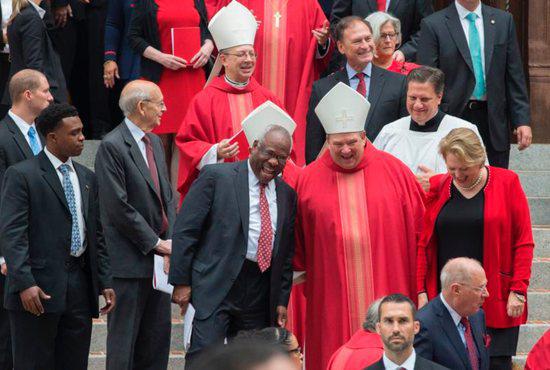 Archbishop Bernard Hebda of St. Paul and Minneapolis and U.S. Supreme Court Justice Clarence Thomas share a light moment as they leave the Cathedral of St. Matthew the Apostle in Washington after the annual Red Mass Oct. 2. Also pictured above are Auxiliary Bishop Barry Knestout of Washington.
Archbishop Bernard Hebda of St. Paul and Minneapolis and U.S. Supreme Court Justice Clarence Thomas share a light moment as they leave the Cathedral of St. Matthew the Apostle in Washington after the annual Red Mass Oct. 2. Also pictured above are Auxiliary Bishop Barry Knestout of Washington.
Look up “Red Mass” on Google and you will find practically all of the members of congress, the executive office, and the judicial branch of government attending.
CONCLUSION
The Roman Catholic Church has other special masses for different officers and leaders of the people besides the Red Mass. Some of these are:
1. The Blue Mass: This mass is for police officers and others engaged in public safety. The Blue Mass is a Mass celebrated annually in the Catholic Church for those employed in the “public safety field” (i.e. police officers, firefighters, correctional officers, 911 operators and EMS Personnel). The color blue relates to the blue-colored uniforms predominantly used by these services. Similar to the Red Mass, the service honors those who have died in the line of duty and those currently serving as first responders. The mass is an opportunity for the community to show gratitude to first responders and their families.
In Washington, D.C. the service is held in conjunction with National Police Week. Though usually held in a Catholic Church, the events are generally considered to be ecumenical or non-denominational.
The Blue Mass dates to September 29, 1934, when Reverend Thomas Dade started the service as part of his duties with the Catholic Police and Fireman’s Society. The first mass was held at St. Patrick’s Catholic Church in Washington, DC and has grown to a nationwide celebration.
2. White Mass or Rose Mass: This special mass is for doctors, nurses and other healthcare professionals. White Masses (so named for the white coats of the physicians) were traditionally celebrated on the Feast of Saint Luke (the patron saint of physicians) in hospitals, chapels, parish churches, cathedrals, and everywhere that the physicians routinely gathered with their chaplains. White Masses honor all those who work in health care from nurses and physicians to dietary staff and lab workers. These masses aren’t just for Catholics. Healthcare workers from all faiths are welcome.
3. Michaelmas: In the fifth century a basilica near Rome was dedicated in honor of the Archangel Michael on September 30, beginning with celebrations on the eve of that day. Michael, the Archangel, is the Catholic’s Patron Saint of the Sea and Maritime Lands, of ships and boatmen, of horses and horsemen. He was the Angel who hurled Lucifer down from Heaven for his treachery.
And September 29 is now kept in honor of Michael and all angels throughout some western churches. The name Michaelmas comes from a shortening of “Michael’s Mass.”
4. Candle Mass: According to the Mosaic Law, a mother who had given birth to a man-child was considered unclean for seven days; moreover she was to remain three and thirty days “in the blood of her purification”; for a female-child the time which excluded the mother from the sanctuary was doubled.
When the time (forty or eighty days) was over the mother was to “bring to the temple a lamb for a burnt offering and a young pigeon or turtle dove for a sin offering,” If she was not able to offer a lamb, she was to offer two turtle doves or two pigeons. The priest prayed for her and so she was cleansed. (Leviticus 12:2-8).
Forty days after the birth of Christ, Mary complied with this precept of the law. She redeemed her first-born from the temple (Numbers 18:15), and was purified by the prayer of Simeon the just, in the presence of Anna the prophetess (Luke 2:22 ).
No doubt this event, the first solemn introduction of Christ into the house of God, was in the earliest times celebrated in the Church of Jerusalem. The Catholics call this day the “Purification of the Virgin.” According to the Roman Missal the celebrant blesses the candles (which must be of beeswax). Having sung or recited the five orations prescribed, he sprinkles and incenses the candles. Then he distributes them to the clergy and laity, whilst the choir sings the canticle of Simeon, “Nunc dimittis”. The solemn procession represents the entry of Christ, who is the Light of the World, into the Temple of Jerusalem.
From Jerusalem the feast of the fortieth day spread over the entire church and later on was kept on the 2nd of February, since within the last 25 years of the fourth century the Roman feast of Christ’s nativity (December 25th) was introduced.
What! There was no Christ’s mass held anywhere in the world until 375 AD?
- When Jesus was born, there were no Christ’s Mass (Christmas) celebrations
- During the first century, there were no Christ’s Mass (Christmas) celebrations.
- During the second century, there were no Christ’ Mass (Christmas) celebrations.
- During the third century, there were no Christ’s Mass (Christmas) celebrations.
- It was the last quarter of the fourth century, that the first Christ’s Mass (Christmas) celebrations were held.
5. Christ’s Mass: A special mass for Jesus Christ celebrating His birthday on the same day as the birthday of Mithras, a false god. A decorated green tree is at the height of the celebration.
The World Book Encyclopedia defines “Christmas” as follows: “The word Christmas comes from ‘Cristes Maesse’, an early English phrase that means ‘Mass of Christ.’”
It is interesting to note that the word “mass”, as used by the Roman Catholics, has traditionally been rejected by the so-called Protestants, such as Lutherans, Baptists, Methodists, Presbyterians, Pentecostals and so on. The word “mass” is strictly a Catholic word and thus, so is “Christ’s-Mass.”
In essence, the mass is the ceremonial slaying of Jesus Christ over and over again, followed by the eating of His flesh and the drinking of His blood. The mass is the death sacrifice, and the “host” is the victim. This is official Roman Catholic doctrine, and “Christmas” is a word that they invented.
Have you ever wondered how a Protestant can keep Roman Catholic holidays, like Halloween, Easter and Christmas, and still be a Protestant? Christ’s Mass is held at midnight on December 25th every year.
Have you ever thought about what is so merry about the pain, bleeding, suffering and death of Jesus Christ? Satan has done quite a job of getting millions of so-called “Christians” to blaspheme. What a deceiver he is.
Christ’s Mass is celebrated at the end of the shortest days of the year (December 21-24). For these three straight days the amount of daylight is the same—the shortest days of the year. On the fourth day (December 25) it begins to get a little bit longer.
So, for three days and three nights the amount of daylight remains the same and then the sun is reborn; it begins to be just a little bit lighter; similar to the three days and three nights in the grave and then our Savior was resurrected. So Christ’s Mass is celebrated at midnight in the Roman Catholic Church to celebrate the sun’s rebirth, not Christ’s birth. Christmas is supposed to be the celebration of His birth, but it is at the wrong time of year. In addition, because of the mass, it is a celebration of His death and resurrection. But he only died once and he was only resurrected once. The Roman Catholics have countered the Protestant Reformation and as a result have gotten the majority of their children back.
It would stand to reason, since all of these denominations love and embrace “Christ-Mass,” that December 25th is the great homecoming day, when all of the Protestants become Catholic for a day. It would seem that all of the so-called “wayward daughters” of the Romish church have returned to their mother, the scarlet harlot.
In essence, the Mass is the ceremonial slaying of Jesus Christ over and over again, followed by the eating of his flesh and the drinking of his blood. The mass is the death sacrifice, and the “host” is the victim.
Why would any Protestant follow any Roman Catholic holiday? The mass is an abomination and blasphemy against God. No matter if it’s a Red Mass, a White Mass, Michaelmas, a Candle Mass, or “Christ’s Mass,” they are all masses. The original Protestants hated the mass and did not celebrate it. None of them - Lutherans, Presbyterians, Huguenots, Puritans, Pilgrims, Congregationists, Anabaptists, Mennonites, Amish, etc.
Even those groups who lived in the Alps before the Reformation also hated the mass and the Catholic Church. An example would be the Waldensens who suffered greatly for this belief.
But some Protestants now participate in the Red Mass, some in the White Mass, and almost all of them celebrate Christ’s Mass now. And their theology has switched from the views of the ancient Protestants right back into the hated Catholic theology. For they have switched from the Protestant doctrine of a limited salvation to the Roman Catholic doctrine of universal salvation. And as a result of all this, Protestantism is now destroyed.
Three out of the four presidential and vice-presidential candidates were or are now Catholics. The Supreme Court has five Roman Catholics and three Jewish members. The current nominees for President of the United States will not nominate a true Christian.
And this Protestant nation is no longer Protestant, for they no longer worship their God; they have switched to worshipping the gods of the heathen.
“Come out of her, my people” and “be not deceived.”
Blessed be the LORD God of Israel.

